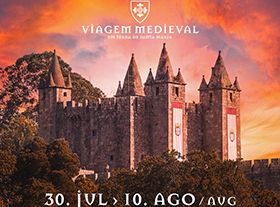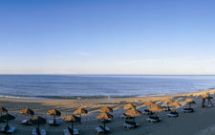Castelo de Santa Maria da Feira
Monuments
The Castle of Santa Maria da Feira is a remarkable Portuguese military monument. The diversity of the defensive resources that were used there between the 11th and 16th centuries make it a unique piece of military architecture, having been fundamental in the whole process of autonomy of the County of Portugal.
Tradition has it that a temple dedicated to a god worshipped by Lusitanians at the time, Bandeveluco-Toiraeco, was built on the site. From 1117 onwards, one of Portugal's most important fairs was held here, which in time gave its name to the village that grew up in the shadow of the castle. Throughout history, various tasks have been carried out there: it was a Castro (fortified Roman place), a Roman settlement, a stronghold against the Norman invasions, a military fort at the time of the Christian Reconquest of the Iberian Peninsula (12th century), the seat of a military region, the great political centre that led to Portugal's independence, and also the home of royal and noble families.
Passing into the ownership of the Casa do Infantado, after 1708, the castle suffered a violent fire that marked the beginning of its long decline and ruin. The municipality started the works for its reconstruction in 1887, but it took a visit of King Manuel II, in 1908, as well as the creation, in the following year, of a Commission for the Protection and Conservation of the Castle, for these works to be carried out.
Between 1992 and 2006, archaeological studies and important restoration and conservation works were carried out, particularly on the Chapel, which is octagonal in plan and Baroque in style, and the Keep. Today, the Keep is prepared to perform the functions of a cultural pole, for holding conferences, meetings, shows, exhibitions and other events.
4520-141 Santa Maria da Feira




 Explore
Explore 
 Remember and Share
Remember and Share 


